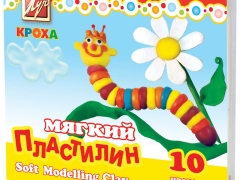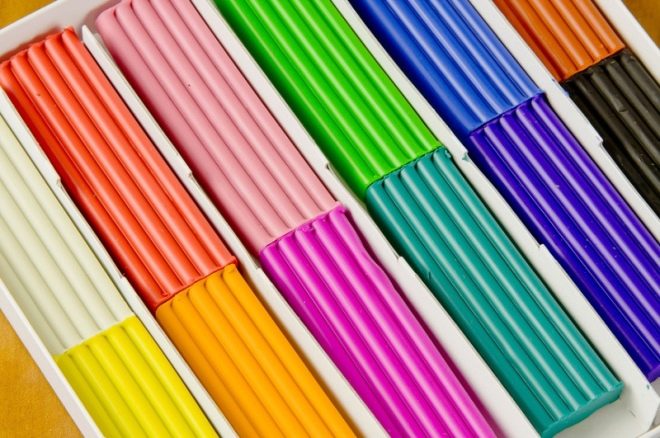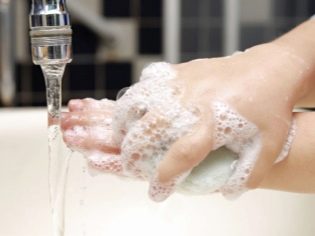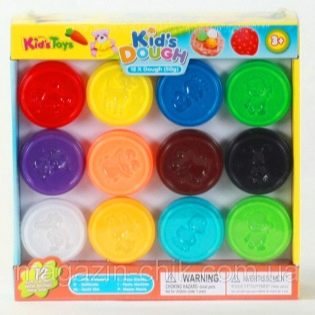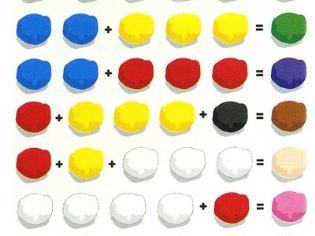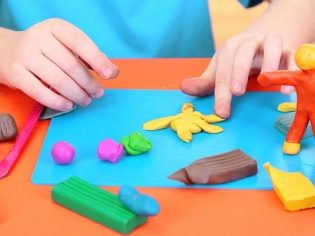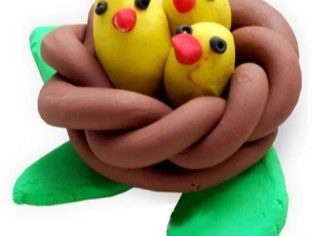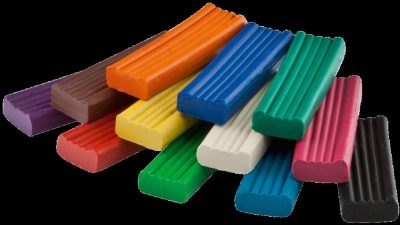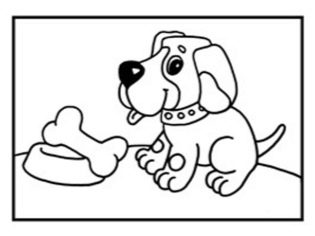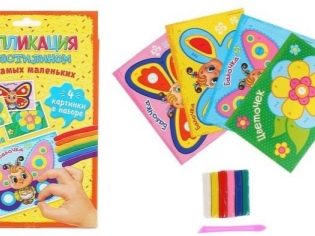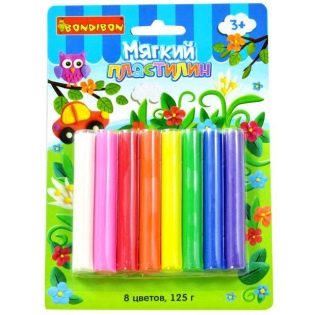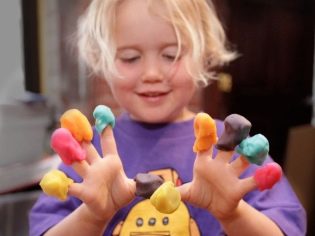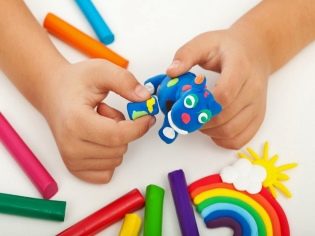How to choose soft clay?
For a person who is not fond of modeling, all types of clay appear to be approximately the same, but in fact there is a huge variety of types of this material, each of which is adapted for certain types of activities. In particular, the smallest children usually get either a dough for modeling, or the so-called soft clay.
Naturally, the latter definition is very abstract, but it is characterized by certain properties, which consist not only in increased softness, but also in a number of other specific characteristics.
General properties
Like most other products, soft clay has both decent samples that have all the best qualities, and cheap semi-handmade fakes. Perhaps it makes no sense to talk about low-quality material options, because they do not always correspond to the name, so pay attention to the features inherent in the best options.
By itself, the increased softness already indicates that such material is for children, designed for the smallest. Although classic plasticine is usually designed for children from 3 years old, it is indicated on boxes with soft clay that it is suitable even for children aged 1 year and 6 months.
At the same time, the observation of adults clearly does not hurt, because this material, despite its really impressive softness, resembling a soft chewing gum, does not break, but it stretches and sticks together very easily, so that trying to swallow it will become a huge problem.
Chemically, it is rather not plasticine, but plastic, and not the safest - it was not recommended for children with a tendency to allergies, and after that, in any case, it is advisable to wash their hands.
The material is rather sticky, therefore, it is rather difficult to eliminate the pollution caused by its contact with fabrics or carpets. Manufacturers themselves strongly discourage the elimination of such contamination with water or detergents - on the contrary, they advise wait for the residue to dry, and only then clean the surface with a brush and vacuum the resulting dust with a vacuum cleaner.
By the way, they generally do not advise to somehow combine soft clay with water - it is already too soft, so its dilution will turn the material into incomprehensible slush, which can no longer be sculpted.
It is possible to restore elasticity with the help of water, but in minimal quantities, adding literally one drop.
As it becomes clear, soft plasticine loses its properties when in contact with open air, since moisture and dryness are harmful to it. To be more precise, the open air for him is not a problem if the figure is already fashioned and fully satisfies its creator. Even initially, such a mass for modeling very well holds a complex shape, and in a frozen form, it gradually turns into a kind of rubber, which loses elasticity over time.
At first, the finished figure ceases to succumb to attempts to knock it, confining itself only to twisting and then independently returning to its original form, later it simply breaks down when trying to bend it. Because of such high sensitivity to environmental features This material is sold exclusively in jars or airtight bags.
The first option is preferable because it allows the use of clay repeatedly.
Contrary to the fact that the weight is usually listed as very small, the clay in the package should be quite a lot, because it is almost weightless. When working with colored parts care must be taken, since the pieces are glued together at the slightest contact, and then you can only separate them with something sharp, cutting along the connection line. With careful mixing of colorful pieces over time, complete color mixing to a uniform tone is achieved.
In terms of shaping the material is very malleable, from it you can roll traditional balls and sausages, you can sculpt the finest pancakes, as well as stamp any prints with the help of special forms, to which the soft clay is practically not glued. Cutting successfully carried out using a simple plastic knife for clay, and ordinary scissors.
With molds designed for "cutting", the situation is somewhat more complicated - although the contour seems to be clear, it is almost impossible to separate the cut fragment from the workpiece due to the material's strong elasticity, which leads to the deformation of the product.
Soft plasticine in the open air begins to harden, gradually turning into a kind of rubber - the first consequences of this are obvious in a few hours. Within a day, the manufactured product cannot be corrected, although it still bends and springs beautifully. A few days later, the figure loses much elasticity and can break under strong mechanical stress, but it still remains elastic.
Sets
Like many types of modern plasticine, soft is often sold not only as a material, but in the form of sets for creativity, somewhat expanding the possibilities of creative search. Of course, components vary from kit to kit, however, at least theoretically you can count on the following components:
- Multiple packs or jars with clay of different shades. Quality mass types are often sold in a small set of up to 3 primary colors, which are simply mixed to obtain all the other colors and shades; In this case, the kit often includes a special instruction that suggests the proportions for obtaining the desired result. There are sets of 10-12 colors, however, such a variety often means that mixing colors from this set will not give such a high-quality result, so you have to limit yourself strictly to what it is.
- Plastic knife. Given the material, it is an excellent addition, allowing at least somehow divide the clay into pieces. Can be with a smooth blade or notch.
- Picture for applications. Since soft clay is perfectly rolled into thin pancakes, it is often used to create applications based on ready-made contours. Theoretically, for these purposes, you can use any coloring, designed for ordinary pencils, but often one or several pictures are immediately included in the set. Those in the set will be more useful, because purposefully they do not contain complicated small details that are difficult to mold out of clay.
- Instructions for sculpting specific figures. Since soft clay quickly loses its original elasticity, it is assumed that a masterpiece will be sculpted from it immediately. However, not every child can independently invent and make a decent figure with his own hands, so the sets are often supplemented with a detailed description of how to make something nice without special special skills, without straining. Such an instruction is useless to a child who has mastered the modeling perfectly, but for beginners it will become a real salvation.
Manufacturers
Nowadays, quite a lot of different manufacturers are engaged in the production of soft plasticine, each of which differs in its specificity.
If we talk about the maximum quality, it is usually the most praised by foreign manufacturers, but, of course, not all, but only such well-known brands of children's products, as Bondibon and Artberry. Their products are notable for more tangible softness and elasticity at the initial stage, and even in a partially hardened state, it bends quite easily, really resembling rubber. Of course, high quality can not affect the cost, because the same Bondibon impractical to buy for beginners. It is more relevant in a situation where the child can actually make a good toy for himself.
In all other cases it will be more practical to pay attention to the products of other, more budget brands.
If we talk about domestic manufacturers, here it is primarily to highlight the brand "Baby". Given that all domestic products are significantly cheaper than products from major world brands, this manufacturer produces a relatively good product, which really has qualities that resemble the best samples of this material. At a minimum, this material is not bad for learning, although it may be worthwhile to choose something more expensive for a real little master.
As for the little-known domestic or Chinese firms, they usually lure the Russian consumer with low prices, but this, unfortunately, beats the quality very much. In fact, such a purchase may not be as soft as expected, and not so much different from the classic clay.
Often the mass retains moisture and dries out too quickly, and in the dried form it loses strongly in elasticity and can crumble at the slightest touch. Cheap samples are also often poorly shaped, strongly resembling poor quality dough for modeling.
In short, you should not save on the purchase of soft clay, because the acquisition may be stupid.
Reviews
If soft clay was acquired in quality, then the reviews about it are almost entirely positive - they say, interesting material, good for even the smallest, keeps its shape perfectly, does not create difficulties in work, allows you to play with the finished figure. Usually, soft plasticine is praised, which received the commercial name of “children's clay”, whereas, because of the vagueness of the concept, classic plasticine of increased softness is often referred to here, even if it does not have the necessary properties.
As for the choice of a particular set, everything depends on the goals. The higher the professionalism of the child, the more expensive soft clay you need to take. This is the case when price really matters. For the needs of the novice baby in sculpting, Scarce will be fine.
The fact that you can blind with a child of clay, you can learn from the following video.
